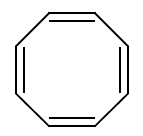Understanding the stability of aromatic molecules often revolves around Huckel's rule, which identifies specific numbers of pi electrons—2, 6, 10, and 14—as particularly stabilizing. These numbers are significant because they correspond to configurations where all bonding molecular orbitals are fully occupied, leading to enhanced stability. In contrast, configurations that deviate from these numbers can result in partially filled orbitals, which contribute to instability.
To visualize and analyze the stability of aromatic compounds, the inscribed polygon method, also known as the polygon and circle method or Frost circle, is employed. This technique allows for a clear representation of pi electrons in molecular orbitals. The first step involves drawing a polygon with one vertex pointing downwards, which represents the molecular structure of the compound. Each vertex of the polygon corresponds to a molecular orbital, and a horizontal line is drawn to divide the polygon into two halves, indicating the distribution of these orbitals.
Next, the number of pi electrons is inserted into the molecular orbitals, starting from the lowest energy level and following the Aufbau principle, which states that electrons fill the lowest energy orbitals first. Additionally, Hund's rule applies when dealing with degenerate orbitals—those with the same energy level—requiring that electrons be distributed evenly among them before pairing occurs.
For example, in a heterocyclic compound with nitrogen, the nitrogen atom can donate its lone pair, contributing to a total of 6 pi electrons, which fills all bonding orbitals and results in a stable configuration. Conversely, cyclobutadiene, with 4 pi electrons, leads to an antiaromatic structure due to the presence of unfilled orbitals, which destabilizes the molecule. Similarly, the cyclopropenyl anion also exhibits instability with its 4 pi electrons.
The key takeaway is that aromatic compounds, such as benzene with its 6 pi electrons, achieve unique stability because all bonding orbitals are filled, while antiaromatic compounds, characterized by non-Huckel numbers, possess partially filled orbitals that lead to instability. This understanding underscores the importance of Huckel's rule in predicting the stability of aromatic systems and highlights the relationship between electron configuration and molecular stability.




